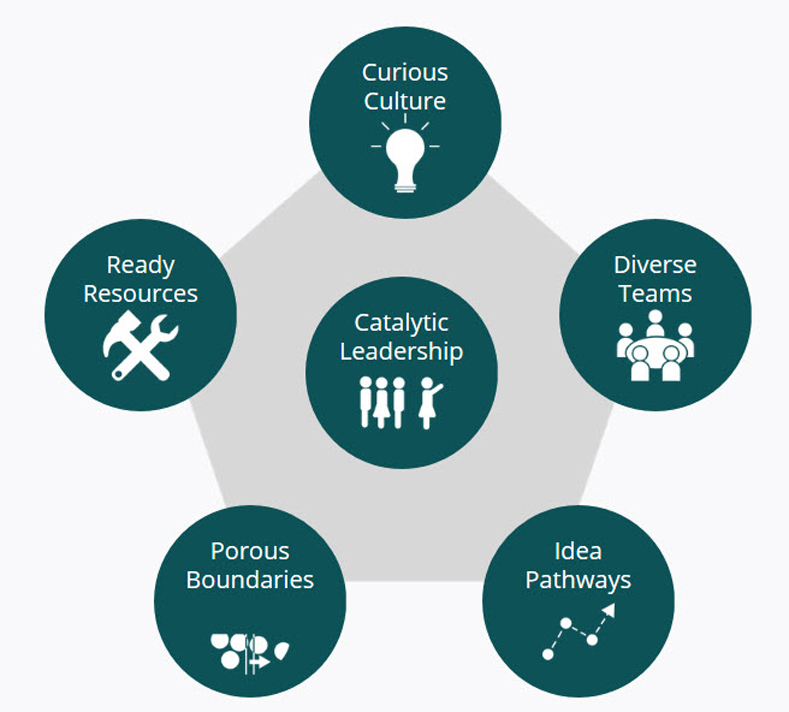Creativity in the workplace is defined as the creation of new and useful ideas or solutions. If we’ve learned anything from history, it is that nothing spawns creativity and innovation quite like a global upheaval, and it wouldn’t be wrong to say that we’re currently going through the mother of all global upheavals – the COVID-19 pandemic.
After going through two winters, AI is finally driving innovation in start-ups and industry giants. From AI being used to protect the wellbeing of employees to AI-powered chatbots for more efficient company-wide communication, we are seeing the use of AI make the leap from theory to commercial applications across the business landscape.
Regardless of the industry, AI, IoT and other emerging technologies are playing a vital role in bringing about growth acceleration. By bringing about watershed changes to the way we do business in a post-pandemic era, scaling innovation is changing the very shape of businesses.
Innovation
Competition in any start-up, regardless of the industry, is high. Those companies that are looking to lay off staff members find themselves in the peculiar situation of having to choose between those staff members who are working on products that are currently in-demand and those working on future developments for long-term profitability.
According to industry experts, taking the short-term option during this pivotal time would be the wrong answer. This is mainly because of the fact that while competition remains high in every sector, you simply cannot afford to turn your back on innovation.
Effective Stress Management
According to the American Institute of Stress, 83% of employees have reported being stressed at work and have cited stress and anxiety as a major source of physical and psychological problems. This has only exacerbated during the COVID-19 pandemic mainly due to mounting socio-economic pressures and perceived employment uncertainty. As these stressors grow more salient, it will only lead to depleted employee creativity and negative emotions, both of which can be bad for the company.
Digital Self-Service
Innovation (and a global pandemic) has paved the way for digital self-service, and those who were quick to recognize it are prospering. Pre-pandemic, many businesses often complained about being inundated with calls, emails and other forms of communiqué from their customers asking about everything from product and service availability to after-sales support, guidance on technical issues, and the like. This put an enormous pressure on contact center staff while also resulting in high customer frustration due to long waiting and resolution times.
With more customers self-serving, employees are put under less pressure. This not only leads to cost benefits but gives contact center staff more time to support those vulnerable customers or those who have more complex queries.
Of course, solely offering your customers a way to self-service isn’t going to cut it. You also need to provide them with a seamless digital journey as well. This is yet another area where AI can take over with cutting-edge technologies such as AI-powered Interactive Voice Response (IVR) solutions to give customers a personalized experience.
Ending Note
Apart from web and messaging chatbots powered by AI and Natural Language Processing (NLP), businesses also get to use AI and automation to pre-empt customer needs and arm contact center staff with the information they need before the customer even knows they need it.
In a post-pandemic era, it is without a doubt that scaling innovation and AI are going to be the linchpins for businesses from start-ups to industry giants. That being said, creativity at the workplace is always cascading in nature; as in, the license for curiosity, creativity, and the calculated risks that follow should always start at the highest echelons of a company. This means the entire C-suite and not just the line manager.





